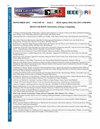利用机器学习对小型数据集进行时间序列故障预测
IF 1.3
4区 工程技术
Q3 COMPUTER SCIENCE, INFORMATION SYSTEMS
引用次数: 0
摘要
基于状态的维护是一种利用状态监测信息优化运行设备可用性的决策策略。在这方面,机器学习技术非常有用,已被用于预测设备的剩余使用寿命(RUL),以通过维护政策确保系统的整体安全性和可靠性,从而降低因故障而产生的成本。这些数据库并不大,这对数据驱动模型来说很棘手。在本研究中,我们考虑了五个不同的数据库,其中包含不同真实设备的故障时间。在此,我们比较了四种不同的回归算法来预测 RUL,即支持向量回归 (SVR)、决策树 (DT)、多层感知器 (MLP) 和 K-Nearest Neighbors (KNN)。此外,为了提高数据质量,我们还使用了经验模式分解(EMD)技术,该技术负责对预测建模所用的输入数据进行预处理。我们使用网格搜索交叉验证算法优化模型超参数,并使用归一化均方根误差(NRMSE)比较每个模型的性能。考虑到所分析的数据集,KNN 模型被证明是最有希望在小型数据集中执行预后任务的模型,它能适应不同数据库的不同特征。此外,我们还提到了优化超参数后的更好性能,它避免了过拟合问题,而且对本文分析的问题而言计算成本较低。本文章由计算机程序翻译,如有差异,请以英文原文为准。
Time-series failure prediction on small datasets using machine learning
Condition-based maintenance is a decision-making strategy using condition monitoring information to optimize the availability of operational plants. In this context, machine learning techniques are useful and have been used in predicting the remaining useful life (RUL) of equipment to ensure the overall safety and reliability of the system through maintenance policies and, consequently, reducing costs arising from the failure. These databases are not large which is tricky for data-driven models. In this study, we consider five different databases containing the failure times from distinct real-world equipment. Here, four different regression algorithms were compared for RUL prediction, namely: Support Vector Regression (SVR), Decision Tree (DT), Multilayer Perceptron (MLP) and K-Nearest Neighbors (KNN). Furthermore, aiming to improve the data quality, the Empirical Mode Decomposition (EMD) was used, which is responsible for pre-processing the input data used on the predictive modeling. We optimize the models hyperparameters using grid-search cross-validation algorithm and the performance of each model is compared using the normalized root mean squared error (NRMSE). Considering the datasets analyzed, KNN model proves to be the most promising to perform the prognostic task in small datasets, adapting itself to the distinct characteristics of the different databases. In addition, we mention the better performance after optimizing the hyperparameters, which avoided overfitting problems and had a low computational cost for the problems analyzed here.
求助全文
通过发布文献求助,成功后即可免费获取论文全文。
去求助
来源期刊

IEEE Latin America Transactions
COMPUTER SCIENCE, INFORMATION SYSTEMS-ENGINEERING, ELECTRICAL & ELECTRONIC
CiteScore
3.50
自引率
7.70%
发文量
192
审稿时长
3-8 weeks
期刊介绍:
IEEE Latin America Transactions (IEEE LATAM) is an interdisciplinary journal focused on the dissemination of original and quality research papers / review articles in Spanish and Portuguese of emerging topics in three main areas: Computing, Electric Energy and Electronics. Some of the sub-areas of the journal are, but not limited to: Automatic control, communications, instrumentation, artificial intelligence, power and industrial electronics, fault diagnosis and detection, transportation electrification, internet of things, electrical machines, circuits and systems, biomedicine and biomedical / haptic applications, secure communications, robotics, sensors and actuators, computer networks, smart grids, among others.
 求助内容:
求助内容: 应助结果提醒方式:
应助结果提醒方式:


